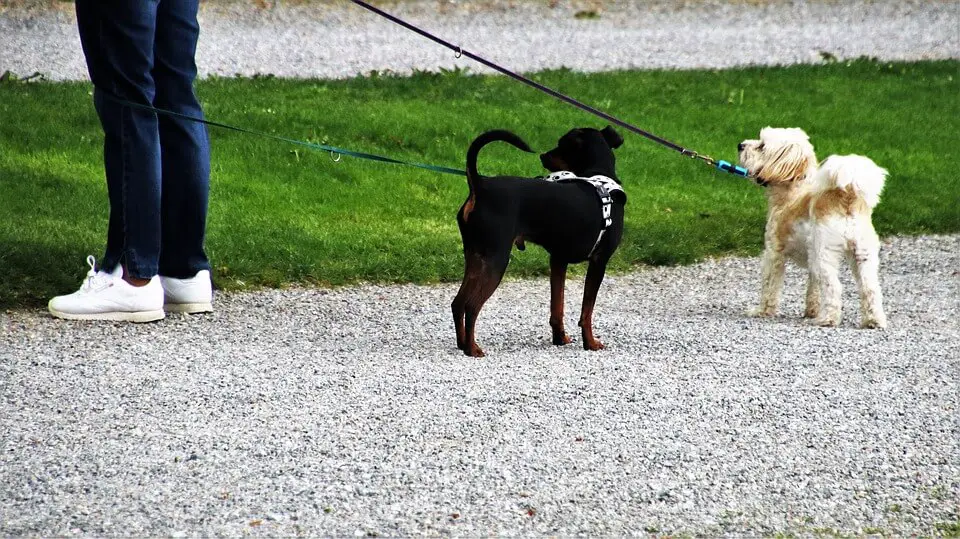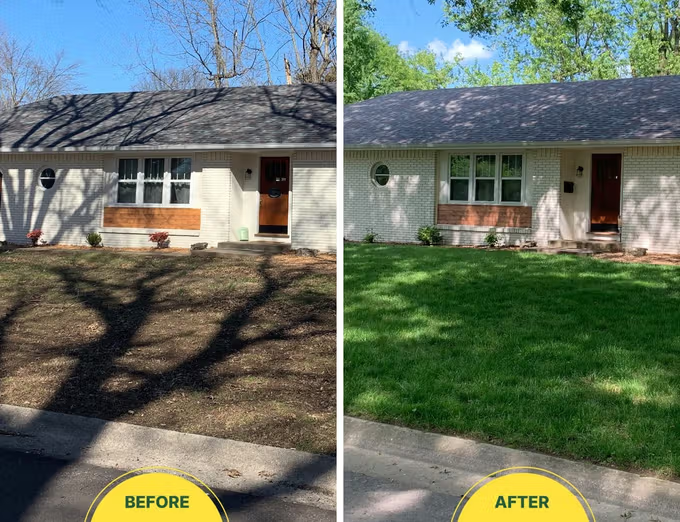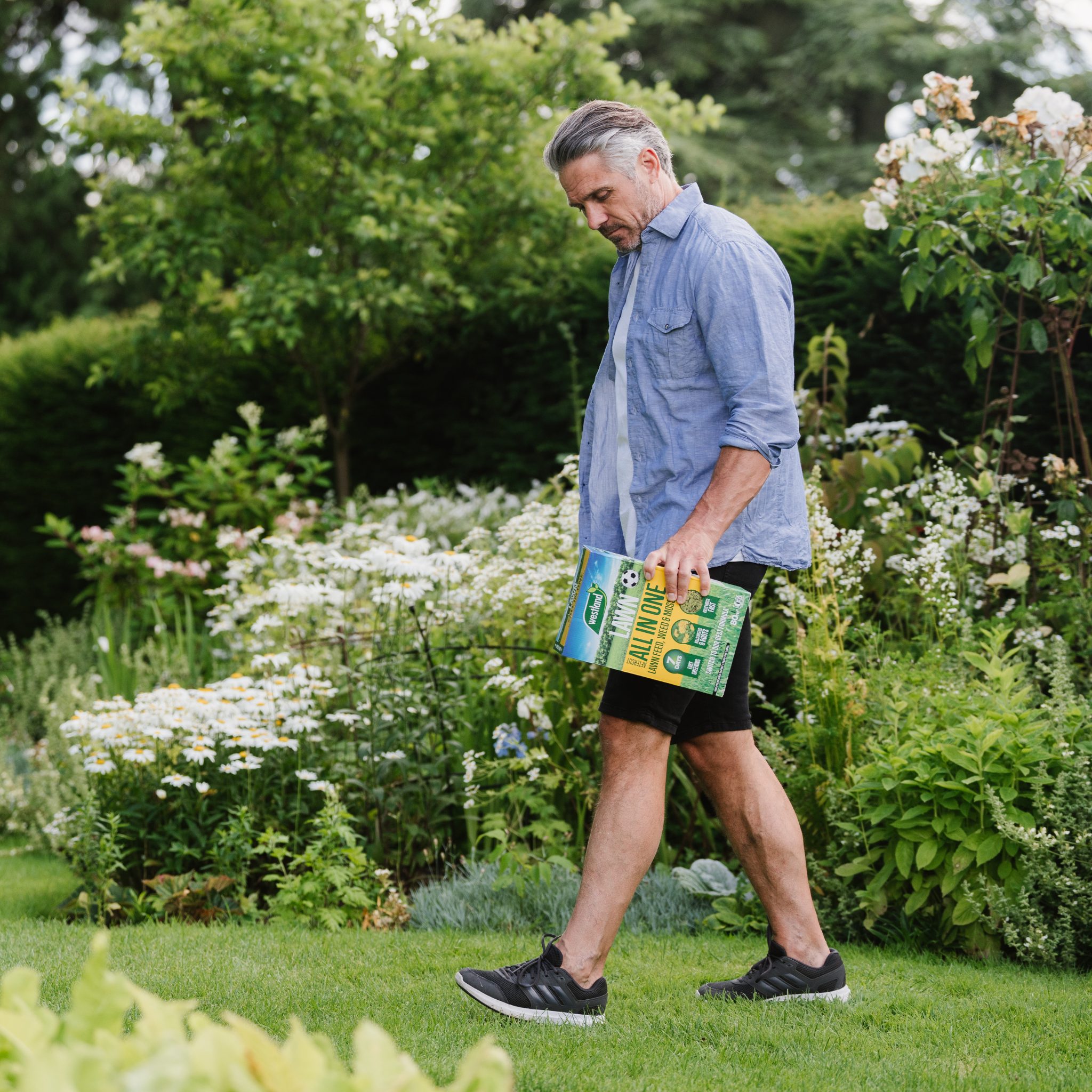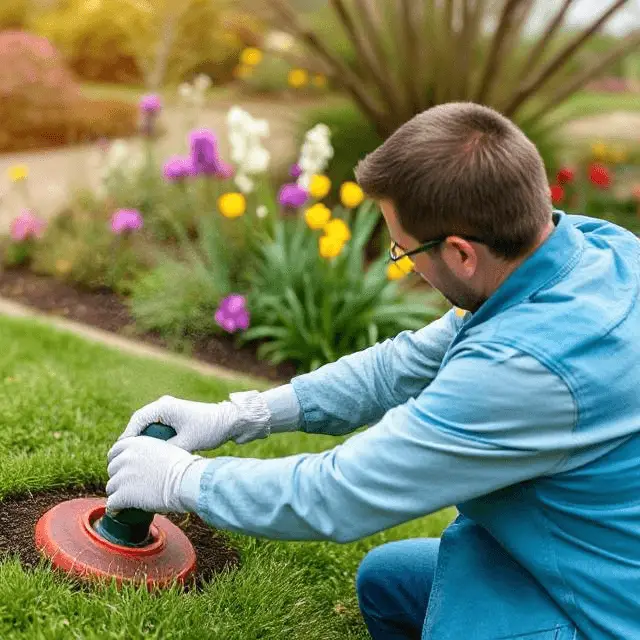Tricks To Repair Grass Destroyed By Dog Urine
Last Updated on September 16, 2019 by Duncan
Dogs are fun to have, and they make life worth living. Unfortunately, dog urine burns grass leading to an ugly lawn. For you to have a beautiful, healthy, green lawn you need to repair grass destroyed by dog urine.
Why does dog urine burn grass?
 Dog urine burns grass due to three reasons: high nitrogen load, an alkaline pH, and concentrated (or dilute) urine. Urine is naturally high in nitrogen which alone causes grass burns.
Dog urine burns grass due to three reasons: high nitrogen load, an alkaline pH, and concentrated (or dilute) urine. Urine is naturally high in nitrogen which alone causes grass burns.
When you have a dog that repeatedly urinates on your lawn, the urine is bound to burn your grass.
Salts and other compounds in the dog urine also contribute to grass burning. Highly acidic or alkaline urine affects the soil pH leading to grass damage.
Many people have the impression that female dogs lead to more grass damage than male dogs, but this isn’t the case. The composition of a dog’s urine doesn’t vary much between sexes.
The reason you might think that the female’s dog urine is more dangerous is that the females pee in one spot while the males urinate in different spots.
How to prevent dog urine from burning grass
 Instead of going through the trouble of repairing your lawn, there are plenty of ways in which you can prevent dog urine from burning the grass in the first place. Some of the things you can do include:
Instead of going through the trouble of repairing your lawn, there are plenty of ways in which you can prevent dog urine from burning the grass in the first place. Some of the things you can do include:
Water the area immediately
The purpose of doing this is to dilute urine and prevent the grass from turning brown. Once you notice where the dog has just peed, hose the area for about 10 seconds.
While this method will work, it’s not sustainable, because you won’t always see where the dog is peeing all the time. In addition to this, you end up wasting a lot of water.
Train the dog to pee in another area
This takes time and commitment. You need to take the dog outside to a particular spot and wait for it to pee. You should then give it a treat and praise.
To make the area stand out from the rest, camouflage it with ornamental plants such as low bushes and tall grasses.
If you have a new puppy, train it to use only one area of the yard. While the small portion will die, you will leave the rest of the area in good condition.
Apply fast-acting lime
Lime neutralizes dog urine preventing damage to the lawn. For spot treatment, sprinkle the recommended amount on the affected area then gently water it.
In addition to offsetting the effects of dog urine, adding high-quality lime to your lawn once a year has been shown to protect the lawn from dead spots. It also gives the grass a greener and healthier look.
Apply baking soda
If you don’t have access to lime, you can use one of the most popular products—baking soda. Dissolve two tablespoons of baking soda in a gallon of water then pour the mixture onto the affected spots.
Baking soda neutralizes ammonia and nitrogen preventing your lawn from turning brown. Baking soda is harmless to dogs; therefore, you don’t have to worry about your furry friend getting sick from walking on the baking soda soaked grass and licking his feet.
Plant dog resistant grass
If you don’t want to go through the trouble of training your dog, plant grass that is resistant to dog urine. One of the most popular varieties is clover.
In addition to clover being resistant to dog urine, it doesn’t require a lot of watering, mowing or fertilizers. It also naturally fixes any extra nitrogen you may be having in your soil.
Other varieties you can try out are fescue, and rye. You only need to do your research and find a variety that does well in your area.
Increase your dog’s water intake
Water will dilute the nitrogen in the urine, preventing your grass from getting burnt when the dog pees. Of course, the dog will pee more often, but the benefits outweigh the trouble of having a brown lawn.
Adjust the dog’s diet
You need to feed the dog foods that will counteract the nitrates in your dog’s diet. Some of the foods to try out include bananas, carrots, apples, peanut butter, cheese, broccoli, and celery.
Remember to be cautious when introducing the foods as you might hurt your dog. To be safe, first, get the input of your veterinary.
Reduce the use of nitrogen-rich fertilizer
You can reduce or even prevent the grass from getting damaged by lowering the amount of nitrogen-rich fertilizer you apply on your lawn.
Use dog rocks
Dog rock increases the pH in the dog’s urine by altering the pH of the water that the dog takes. All you have to do is to place the rocks in the dog’s water bowl, and they will raise the water pH that the dog is taking.
Dog rocks are highly effective in situations where you can’t switch the dog’s diet. While this method will prevent new grass from being burnt, it won’t fix patches that are already damaged.
Repairing grass destroyed by dog urine
 What should you do if the dog urine has already burnt your grass and damaged it? You need to fix it. Some of the ways of doing it include:
What should you do if the dog urine has already burnt your grass and damaged it? You need to fix it. Some of the ways of doing it include:
Apply lawn repair treatment products
You apply the treatment products on the affected areas of the lawn. Right treatment products introduce healthy enzymes and nutrients to the damaged soil allowing the grassroots to heal and encourage the damaged grass to re-grow.
When looking for the lawn repair product, go for one that is specifically designed to repair a lawn damaged by dog urine. Some of the most popular products in the market are Earth’s balance Dogonit lawn rejuvenator and EZ seed dog spot repair.
Before you apply the product, ensure that you rake the dead grass and remove all of the matted grass that might be there. You should then spray the area with the product then follow up with watering the area for at least 10 minutes.
Using limestone
Limestone will neutralize the acid from nitrogen so that the new grass can proliferate. Before you apply lime, remove as much dead grass as possible. While you don’t have to tear up the soil itself, scrape away as much dead grass blades and stems as possible.
You should then apply limestone on the scraped surfaces using a shovel or spade. Limestone is carcinogenic; therefore, avoid inhaling it by wearing a dust mask when working.
Your next step should be to water the area lightly. Avoid overwatering the surfaces as doing so will make the water run to a different part of the lawn, diminishing its effect.
After letting the limestone set for a week, generously cover the area with a fresh layer of topsoil and a few handfuls of grass seed.
You should then apply water on the surface. Take care that you don’t over-water the surface, which will make the seeds flow away. If you had generously seeded the area and the grass isn’t growing as fast as you would want it to, top it with peat moss.
The light moss will hold the moisture in, encouraging the grass seeds to sprout without drying out.


